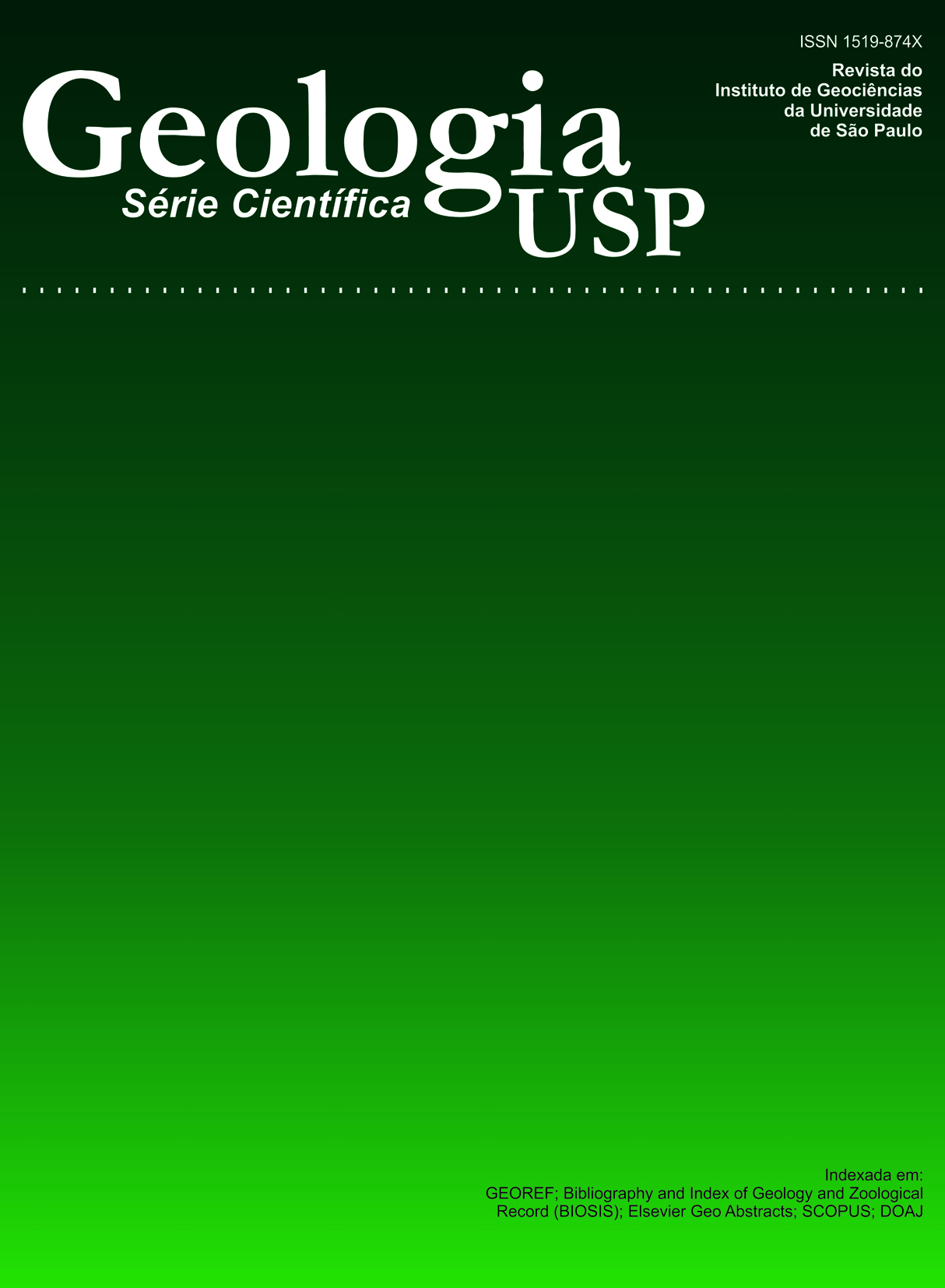Granitos peraluminosos da porção central da Faixa Ribeira, Estado de São Paulo: sucessivos eventos de reciclagem da crosta continental no neoproterozóico
DOI:
https://doi.org/10.5327/S1519-874X2003000100002Palavras-chave:
monazita, geocronologia U-Pb, granito, Faixa RibeiraResumo
O Domínio Embu, na porção central da Faixa Ribeira no Estado de São Paulo, abriga inúmeras ocorrências de intrusões graníticas neoproterozóicas. Peculiar é a abundância de granitos marginal a francamente peraluminosos, que formam dezenas de ocorrências menores, e mesmo alguns batólitos, especialmente na região a leste da cidade de São Paulo. As variedades petrográficas mais comuns incluem biotita granitos porfiríticos, biotita-muscovita leucogranitos brancos e turmalina-granada granitos. Datações U-Pb em monazita obtidas em anos recentes têm revelado que, a despeito da similaridade petrográfica, esses granitos foram gerados em diversos eventos geológicos que se sucederam em um intervalo de pelo menos ca. 200 milhões de anos, ao final do Neoproterozóico. As idades mais antigas, da ordem de 780 Ma, têm sido obtidas em ortognaisses peraluminosos, alguns ricos em minerais máficos e muscovita, e em alguns aspectos similares a típicos granitos"S". Dados preliminares obtidos em monazitas do batólito Serra do Quebra-Cangalha fornecem idade de ca. 680 Ma, mostrando ser ele significativamente mais antigo que a principal manifestação do magmatismo cálcio-alcalino no domínio Embu (o batólito Agudos Grandes, com 610 - 600 Ma). Os leucogranitos peraluminosos tipo Turvo, datados em 610 ± 2 Ma, se associam à fusão crustal durante este último evento. Diferentes manifestações graníticas de menor porte situadas no Domínio Embu a leste da cidade de São Paulo têm fornecido idades U-Pb em monazita no intervalo 580 - 590 Ma (maciços Mauá, Mogi das Cruzes, Jaguari). Idade similar foi obtida para a cristalização do batólito Natividade da Serra, no Domínio Costeiro (587 ± 5 Ma). Essas idades coincidem com o pico do magmatismo granítico da orogênese Rio Doce na porção oriental da Faixa Ribeira. Idades U-Pb ainda mais jovens (~540 Ma) foram obtidas em monazita de um muscovita-biotita granito do maciço Santa Branca; seu significado, no entanto, é ainda duvidoso, dado o caráter fortemente discordante dos resultados analíticos.Downloads
Os dados de download ainda não estão disponíveis.
Downloads
Publicado
2003-08-01
Edição
Seção
Artigos
Licença
Autores que publicam nesta revista concordam com os seguintes termos:
- Autores mantém os direitos autorais e concedem à revista Geologia USP. Série Científica, o direito de primeira publicação, com o trabalho sob a licença Creative Commons BY-NC-SA (resumo da Licença: https://creativecommons.org/licenses/by-nc-sa/4.0 | texto completo da licença: https://creativecommons.org/licenses/by-nc-sa/4.0/legalcode) que permite o compartilhamento do trabalho de forma não comercial e conferindo os devidos créditos autorais da primeira publicação nesta revista.
- Autores têm autorização para assumir contratos adicionais separadamente, para distribuição não-exclusiva da versão do trabalho publicada nesta revista (publicar em repositório institucional ou como capítulo de livro), conferindo os devidos créditos autorais da primeira publicação nesta revista.
- Autores têm permissão e são estimulados a publicar e distribuir seu trabalho online (em repositórios institucionais ou na sua página pessoal) a qualquer ponto antes ou durante o processo editorial, uma vez que isso pode gerar alterações produtivas, bem como aumentar o impacto e a citação do trabalho publicado (Veja O efeito do Acesso Aberto e downloads no impacto das citações).
Como Citar
Janasi, V. de A., Alves, A., Vlach, S. R. F., & Leite, R. J. (2003). Granitos peraluminosos da porção central da Faixa Ribeira, Estado de São Paulo: sucessivos eventos de reciclagem da crosta continental no neoproterozóico . Geologia USP. Série Científica, 3, 13-24. https://doi.org/10.5327/S1519-874X2003000100002















